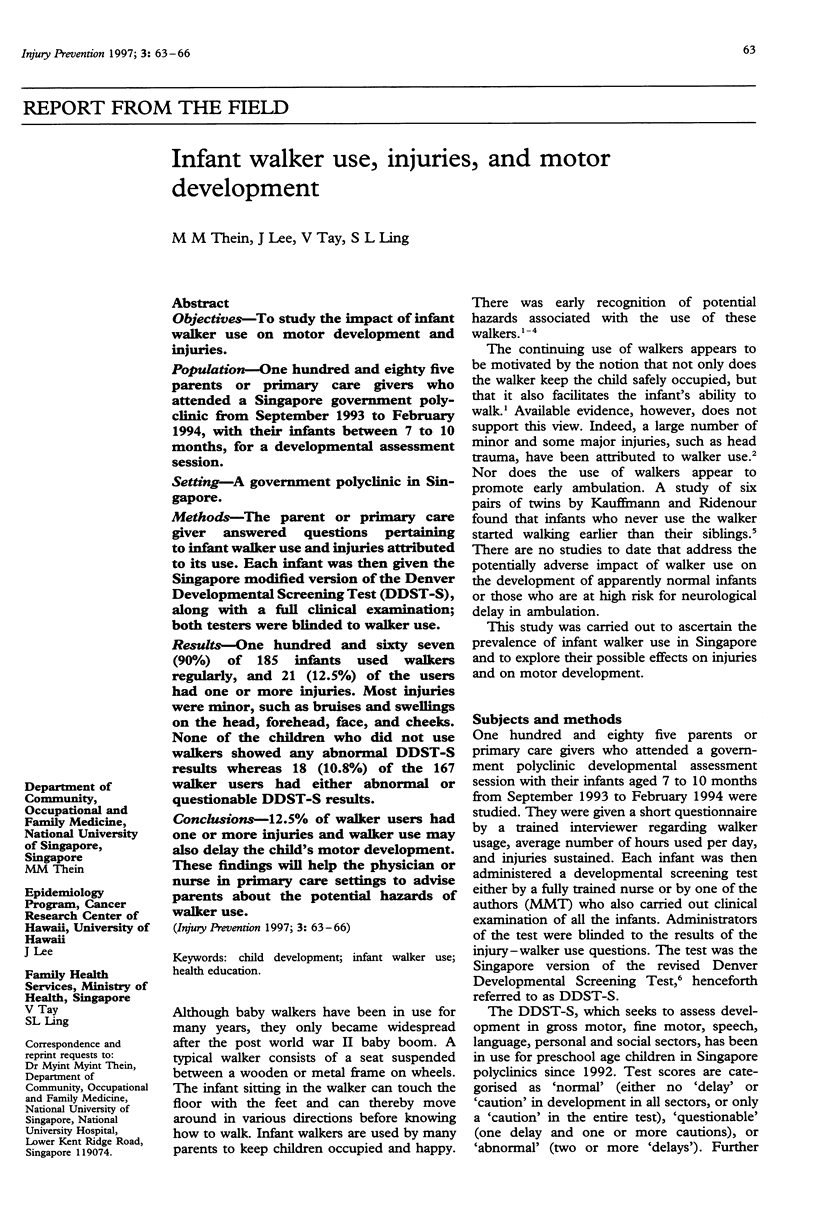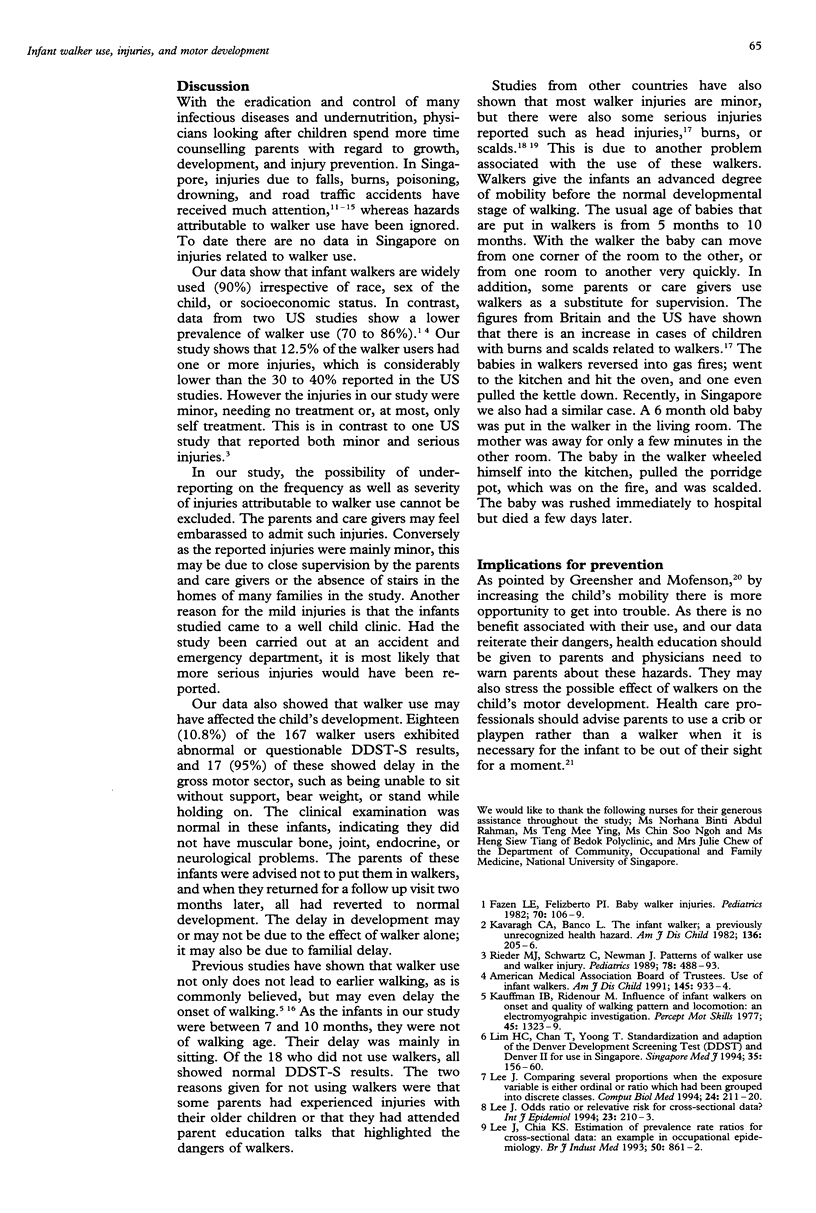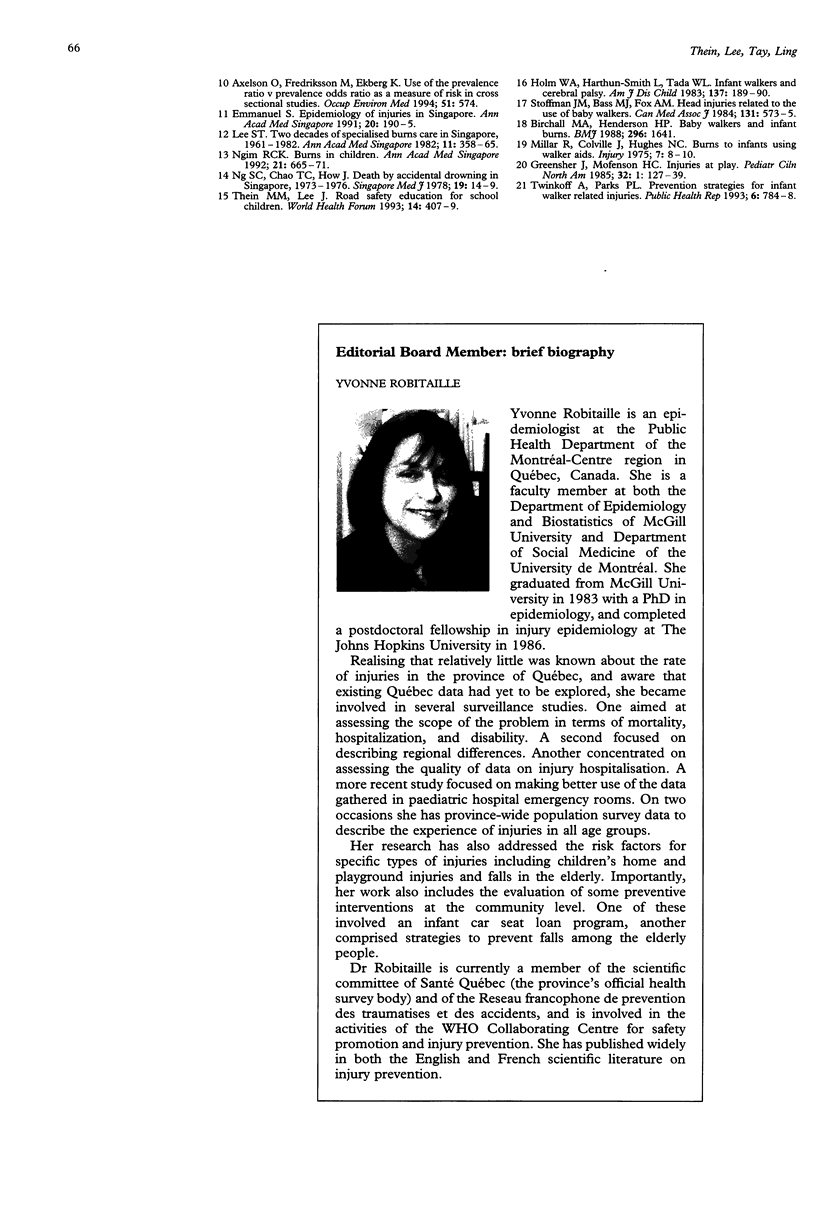Abstract
OBJECTIVES: To study the impact of infant walker use on motor development and injuries. POPULATION: One hundred and eighty five parents or primary care givers who attended a Singapore government polyclinic from September 1993 to February 1994, with their infants between 7 to 10 months, for a developmental assessment session. SETTING: A government polyclinic in Singapore. METHODS: The parent or primary care giver answered questions pertaining to infant walker use and injuries attributed to its use. Each infant was then given the Singapore modified version of the Denver Developmental Screening Test (DDST-S), along with a full clinical examination; both testers were blinded to walker use. RESULTS: One hundred and sixty seven (90%) of 185 infants used walkers regularly, and 21 (12.5%) of the users had one or more injuries. Most injuries were minor, such as bruises and swellings on the head, forehead, face, and cheeks. None of the children who did not use walkers showed any abnormal DDST-S results whereas 18 (10.8%) of the 167 walker users had either abnormal or questionable DDST-S results. CONCLUSIONS: 12.5% of walker users had one or more injuries and walker use may also delay the child's motor development. These findings will help the physician or nurse in primary care settings to advise parents about the potential hazards of walker use.
Full text
PDF



Selected References
These references are in PubMed. This may not be the complete list of references from this article.
- Emmanuel S. Epidemiology of injuries in Singapore. Ann Acad Med Singapore. 1991 Mar;20(2):190–195. [PubMed] [Google Scholar]
- Fazen L. E., 3rd, Felizberto P. I. Baby walker injuries. Pediatrics. 1982 Jul;70(1):106–109. [PubMed] [Google Scholar]
- Greensher J., Mofenson H. C. Injuries at play. Pediatr Clin North Am. 1985 Feb;32(1):127–139. doi: 10.1016/s0031-3955(16)34761-7. [DOI] [PubMed] [Google Scholar]
- Kauffman I. B., Ridenour M. Influence of an infant walker on onset and quality of walking pattern of locomotion:an electromyographic investigation. Percept Mot Skills. 1977 Dec;45(3 Pt 2):1323–1329. doi: 10.2466/pms.1977.45.3f.1323. [DOI] [PubMed] [Google Scholar]
- Kavanagh C. A., Banco L. The infant walker. A previously unrecognized health hazard. Am J Dis Child. 1982 Mar;136(3):205–206. doi: 10.1001/archpedi.1982.03970390019005. [DOI] [PubMed] [Google Scholar]
- Lee J., Chia K. S. Estimation of prevalence rate ratios for cross sectional data: an example in occupational epidemiology. Br J Ind Med. 1993 Sep;50(9):861–862. doi: 10.1136/oem.50.9.861. [DOI] [PMC free article] [PubMed] [Google Scholar]
- Lee J. Comparing several proportions when the exposure variable is either ordinal or ratio which has been grouped into discrete classes. Comput Biol Med. 1994 May;24(3):211–220. doi: 10.1016/0010-4825(94)90017-5. [DOI] [PubMed] [Google Scholar]
- Lim H. C., Chan T., Yoong T. Standardisation and adaptation of the Denver Developmental Screening Test (DDST) and Denver II for use in Singapore children. Singapore Med J. 1994 Apr;35(2):156–160. [PubMed] [Google Scholar]
- Millar R., Colville J., Hughes N. C. Burns to infants using walking aids. Injury. 1975 Aug;7(1):8–10. doi: 10.1016/0020-1383(75)90051-0. [DOI] [PubMed] [Google Scholar]
- Ng S. C., Chao T. C., How J. Death by accidental drowning in Singapore, 1973-1976. Singapore Med J. 1978 Mar;19(1):14–19. [PubMed] [Google Scholar]
- Rieder M. J., Schwartz C., Newman J. Patterns of walker use and walker injury. Pediatrics. 1986 Sep;78(3):488–493. [PubMed] [Google Scholar]
- Stoffman J. M., Bass M. J., Fox A. M. Head injuries related to the use of baby walkers. Can Med Assoc J. 1984 Sep 15;131(6):573–575. [PMC free article] [PubMed] [Google Scholar]
- Thein M. M., Lee J. Road safety education for schoolchildren. World Health Forum. 1993;14(4):407–409. [PubMed] [Google Scholar]


